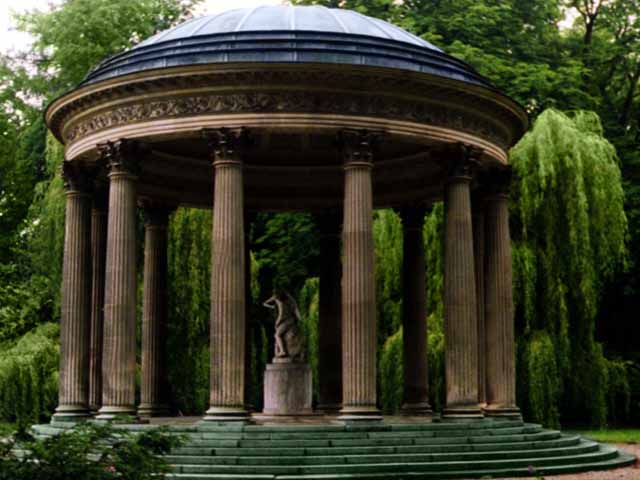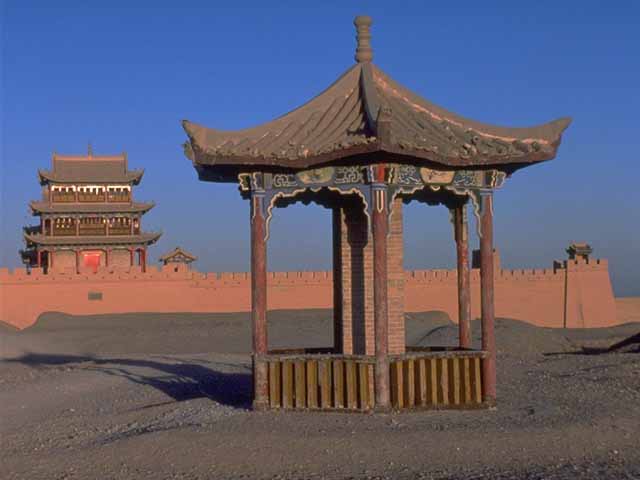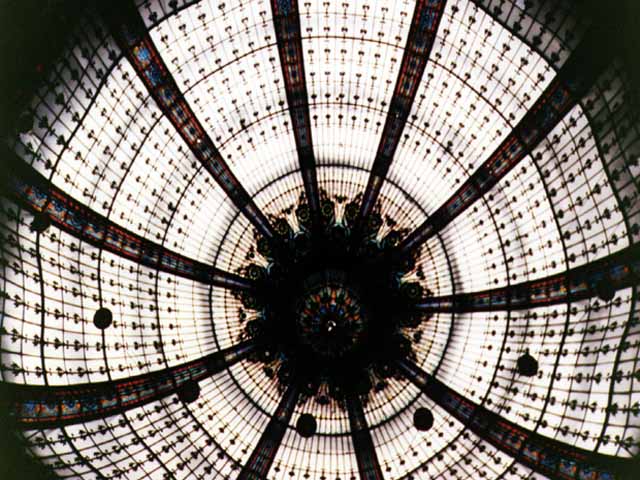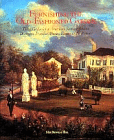

Gazebos have been and are known by many names. They are often called summerhouses or screenhouses. Other names they are known by are kiosks, belvederes, arbors, pergolas, alcoves, retreats, greenhouses, glasshouses, conservatories, lathhouse, bower and garden temples.

Garden Temple is a good way to sum up the origins of gazebos, though it is hard to pin down a specific time and place of origin. The oldest known garden plan dates to roughly 1400 BC. This plan belonged to an Egyptian high court official who resided at Thebes. Historians and archeologists speculated that based on this Thebes garden design, the design of enclosed gardens including walled, free-standing enclosures such as pergolas may go back to 2600 BC or likely even further. It is not unreasonable to speculate they were orignally small temples for communing with the gods.

Early gazebos were very much like small temples. They were built all over Greece and Rome and usually made of marble. They were focal points in the homes and public places. Some early incarnations of the garden temple can be seen in the remains of the Temple of Venus at Baalbek. Likewise the Temple of Apollo fit this category. Modern Western architechture traces some of its roots back to structures that were the heirs of the temples. These were the Basilicas. The word basilica like the structure had Hellinistic origin, (stoa basileos meant "royal room". As royalty had its origins in beliefs that royal blood was blood that came from the "sons of god". This fits the garden temple theory of origin and inheritance

The belvedere form of the "garden temple" was roofed and open on one or more sides. Belvederes may be located within other buildings to provide lighting and ventilation. They are usually positioned in the upper part of a structure or, if freestanding, in a location with an impressive view as belvedere means in Italian "beautiful view". The belvedere has been used extensively in Italy since the Renaiassance. Sometimes an entire building with a "planned view" will be called a belvedere. The gazebo is considered to be a free-standing belvedere.

The term ga-ze-bo itself has its origins in the phrase to "gaze about" or to "lookout". One record shows that the name derived from an 18th century joke word combining "gaze" with the Latin suffix ebo, meaning "I shall." The 17th century philosopher Francis Bacon referred to them as the summerhouse on the summit of a garden. To the Chinese these were "viewing pavilions." However, the name "belvedere" should only be applied to garden structures with extensive views. Pergola is the preferred term for such structures with or without views.
The word "pergola" refers mostly to any garden walk or terrace, roofed with an open framwork over which plants are trained. Its primary purpose was and is to provide a structure upon which vines and other climbing plants can be displayed to advantage in a formal or pleasure garden. Pergolas are very popular in hot climates. They are commonly seen covered with vines or ivies. In the early part of the 20th century they were popular for the purpose of displaying wisteria. Pergolas were noted featured garden structures at the William Randolph Hearst castle at San Simeon, California

A related name and structure, the "kiosk" had its origins in Islamic architecture. The summer palaces of Turkish sultans were called kiosks. One of the Persian mosques with a domed central area became known as the kiosk mosque. In the United States the structure of the kiosk/pergola is found in public parks as bandstands or dancing pavilions. In private gardens the kiosk is the alias of the gazebo/pergola. Oddly the name kiosk also applies to subway entrances, telephone booths, newsstands, information booths, public toilets and freestanding solid cylindars where advertising is posted in European cities.
As an addition to any garden, the versatile structure of the gazebo gives the modern
garden designer a wide range of uses in the garden, which can range from the light corner
accent, to a dramatic focal point. The modern day garden temple is a wonderful structure to
train vines upon. Clematis and wisteria, as well as many ivies are perfect for this, though it
should be noted the many ivies are aggressive growers and in time could overwhelm and possibly
damage your garden temple. Modern day garden temples come in many designs and are constructed
from a wide range of materials. Some are made from steel, some from PVC vinyl, more common
and popular are those made from redwood or cedar. The types made from redwood and cedar are particularly
popular as structures to house outdoor spas and hottubs. A large garden temple can be used for
outdoor meals, parties, practicing an art such as tai chi or qi gung, or they can be used
as a place to sit and sketch or paint, or just to sit and read. Glassed in, the garden temple
can double as a greenhouse. If attached to a residential structure it functions as a
belvedere, solarium or sun room. One company I have found on the Internet makes "garden temples"
from marble or a marble-like substance. They also make fountains and other garden architectures
using blends of bronze and marble. Their portfolios may be viewed online by clicking on the animated
fountain.
References:


